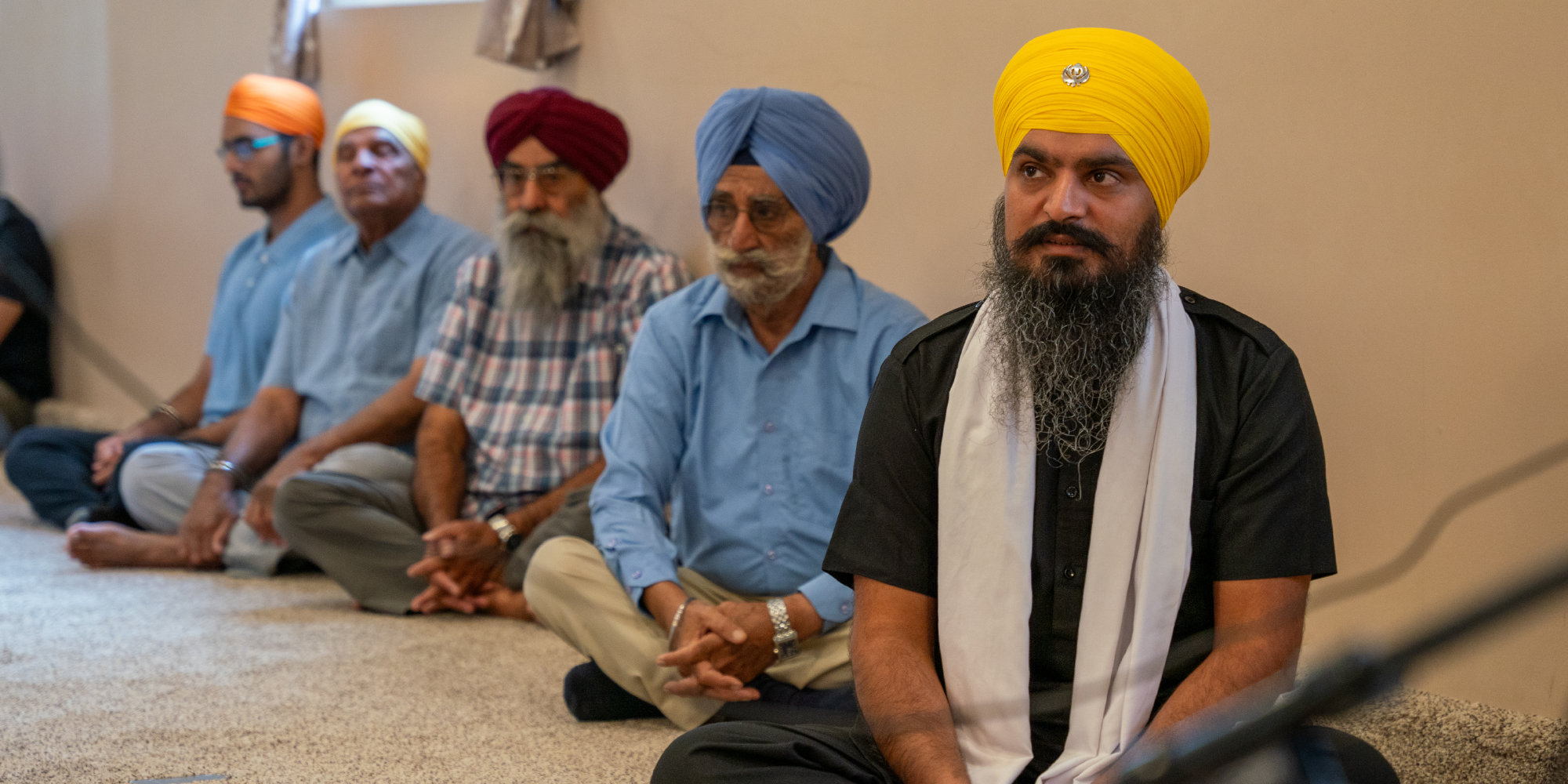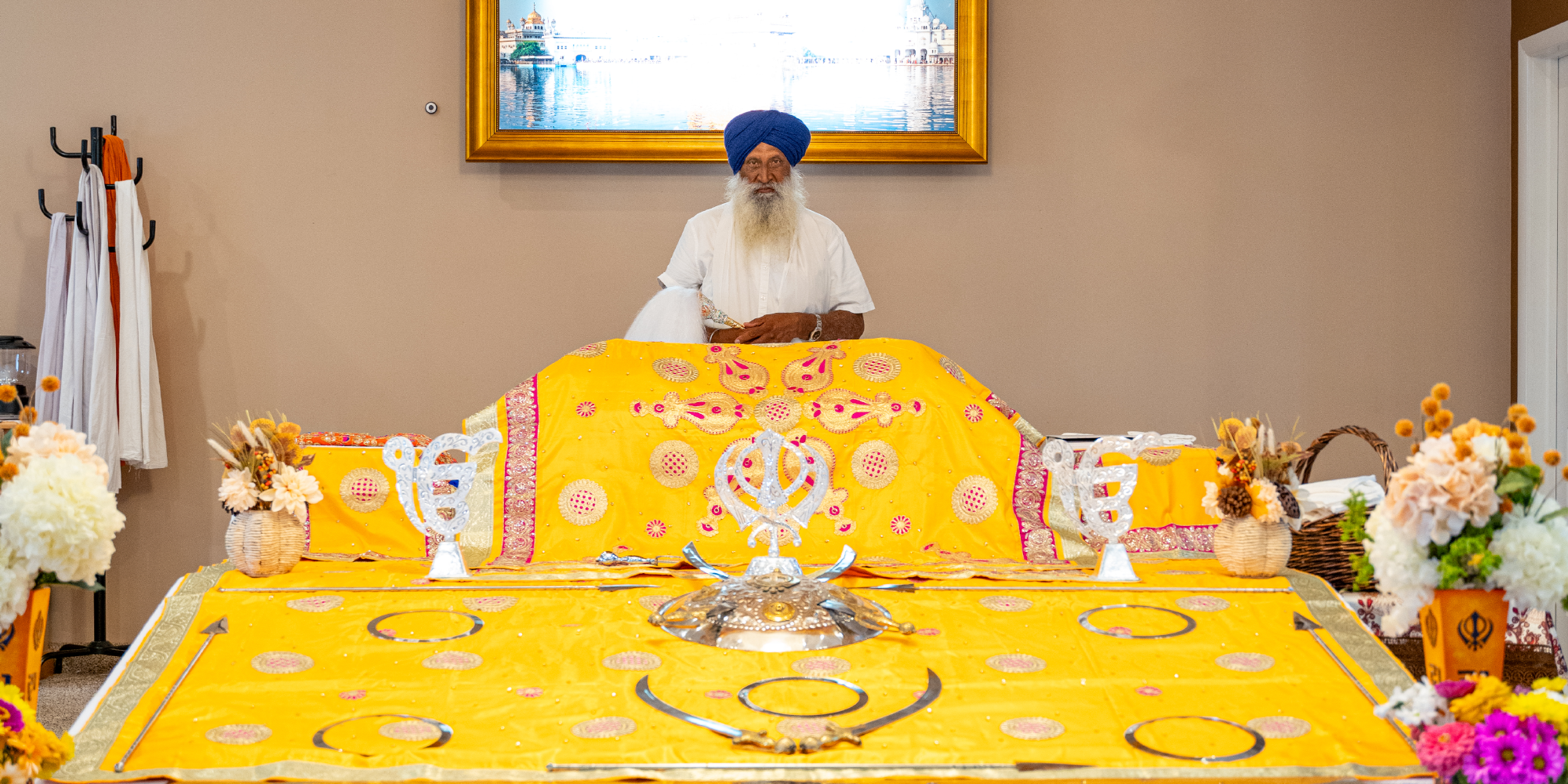A Sikh Society
by Sammy Deol | published Nov. 1st, 2023
Past the shrubbery behind the Province lies the Sikh Society of Rochester, a place of worship — known as a gurdwara — for Sikhs in the region. With its close proximity to campus, students from all backgrounds may visit to learn about the faith and even get a free meal!
The Roots of Sikhism
While Sikhism was founded by Guru Nanak in the late 15th century, its influence did not leave the Indian subcontinent until much later. The earliest Sikh immigrants arrived in the United States around 1900, entering through Angel Island near San Francisco. Working primarily in agriculture and the railroad industry, they soon founded the nation’s first gurdwara, which still stands in Stockton, Calif.
Rochester’s Sikh community started in the 1950s, years after the brutal Indian partition left up to two million dead and displaced many more.
Ajay Singh, a volunteer coordinator at the Sikh Society, describes the evolution of Sikh culture within the city.
“They used to hold gurdwara at different homes,” Singh mentioned. “Five or 10 families — they would gather together and form a Sunday service.”
As the community expanded, they raised money to establish a permanent place of worship, called the Gurdwara of Rochester, in 1976. That gurdwara is now located in Pittsford, though a sect of followers eventually branched off to form the city’s second temple, the Sikh Society.
Singh estimates that there are now about 100 Sikh families in Rochester, making the city one of the largest Sikh enclaves in Upstate New York.
“We get about 150 to 200 people every Sunday,” he noted. The Sikh Society plans to renovate its current temple to accommodate the growing Sikh population. The current site will be converted into a larger dining hall, and a second building will be built next door to house the prayer rooms.
A Day of Service
Prayers at the Sikh Society begin at six o’clock each morning with the "Prakash" ceremony, in which the holy book, Guru Granth Sahib, is unveiled in the main hall. The "granthi" leading the service then reads from a random page — a process called "Hukamnama" — to guide listeners for the day.
Other scheduled prayers, such as the "Five Banis" and "Sukh Asan," continue daily until after sunset.
The temple hosts larger services on Sundays, which is when most of its patrons attend. Singh leads the Sunday school and teaches children Gurmukhi, the Punjabi alphabet in which Sikh prayers are written. Learning to read scripture is particularly important for younger visitors, many of whom were raised in the U.S. and thus lack the same exposure to Sikh principles.
He also translates scripture to English to support learners of the language, as well as outsiders who are simply curious about what the faith entails.
Singh is driven by the tightness of the local Sikh community. He was born in Punjab but moved to Rochester at a young age.
“I pretty much grew up here in the U.S. [and] didn’t know much about Sikhism,” he stated. “I got into it around 16 [or] 17 years of age, when I started researching a little bit more into what my roots are.”
Perhaps the most welcoming part of the Sunday service is "langar," a free and traditional Punjabi lunch offered to all visitors. The meal is prepared by a dedicated group of volunteers, and patrons must sit cross-legged and barefoot on the ground, ensuring that everyone — irrespective of wealth and stature — eats the same food together. The experience is certainly instructive for those wishing to understand a new culture.




